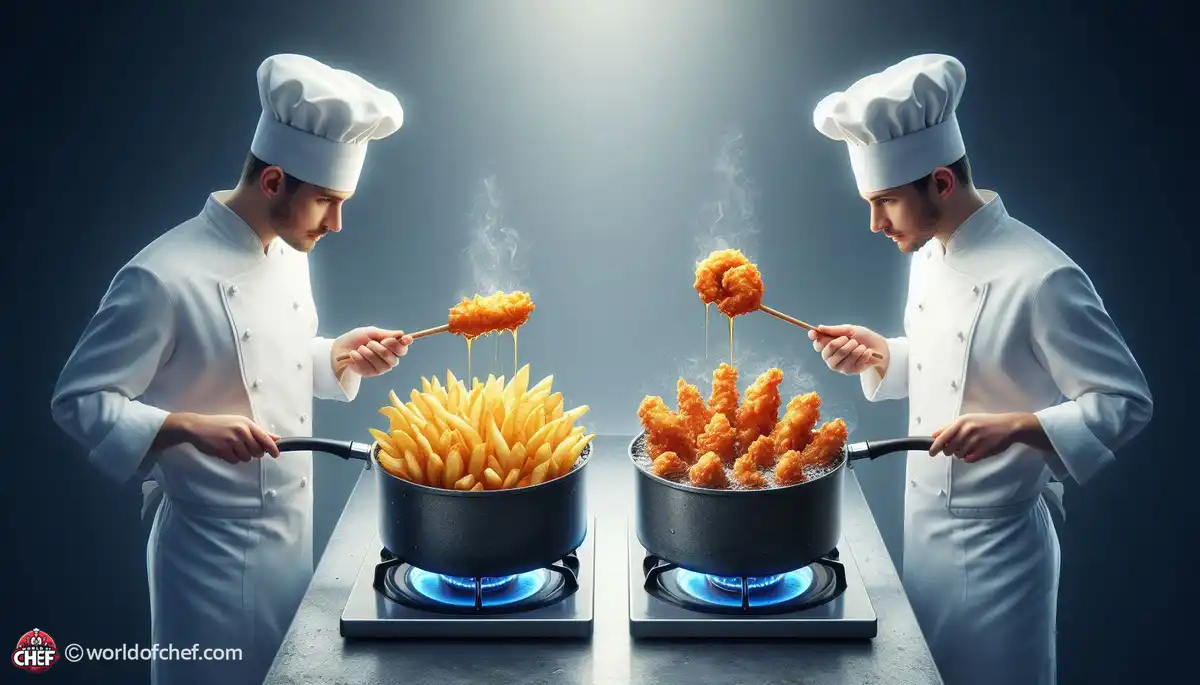
Simmering with Spices: Infusing Flavor into Your Dishes
Emery Donley - Oct 8, 2024 - 8 min read


Frying has always been part of culinary culture from all corners of the earth, providing that much-sought-after crunch and taste to many dishes. Apparently, deep frying and shallow frying appear to be techniques that have nothing to do with each other; still, each brings different virtues to the kitchen table. Let's dig into what makes these two so distinctive.
At its core, it is frying food in the hot oil, turning them into crispy, golden delights. Both deep frying and shallow frying rely on the same principle, but both differ in how they get it done. Deep-frying food completely submerges in oil, whereas shallow-frying just uses enough to cover the bottom of a pan. The difference explains how the process of frying works and how the cooked food would be.
Incorporating Maillard reactions and caramelization, the food takes on its crispy outside while encountering hot oil. Deep frying then involves immersing in oil in order to achieve instant and uniform heat transfer, thus turning the product golden brown and crisp on the outside. However, shallow frying has greater control over the cooking because you can easily control temperature and time for desired outcomes.
Deep frying plunges food into a bubbling cauldron of hot oil, thereby creating a transformative culinary experience. Whether it's golden fries, crunchy chicken, or delicate tempura, this method promises indulgent delights with every bite. The abundant oil envelops the food, sealing in moisture and imparting a rich, flavorful crust that is hard to resist.
To get it perfect, deep-frying needs finesse and detail. The temperature of the oil has to be right, meaning that it has to be hot enough to crisp the outside with no burning of the delicate inside. Proper dredging or battering of the food helps create a protective barrier so that the oil cannot penetrate too much and results in greasiness. As you practice and are patient, this art unlocks worlds of possibilities in cooking.
From classic comfort foods to exotic treats, deep frying elevates an endless array of ingredients. Be it the satisfying crunch of fish and chips, the indulgent decadence of donuts, or the delicate crispness of spring rolls, every dish showcases the versatility and appeal of deep-fried goodness. End.
Light shallow frying is the most controlled form of frying. Since it has low oil levels, less oil is used and splashing is minimized. It would be perfect for more fragile ingredients which need subtle heat and light touches to maintain the natural flavors and textures.
Not like a deep-fry deep immersion, in shallow fry, it's all about balance. The right amount of temperature will do the 'crisp-outside-right-inside-goes-through' deed for food. Shallow fry requires temperature to rise or fall during the cooking process. Continuous concentration and intuition are provided to bring about that perfect outcome.
Beautifully used for those dishes demanding precision and finesse, shallow frying comes as a winner for seared scallops and golden brown schnitzels. This art of shallow frying brings out the natural flavors and textures of ingredients subtlely. By embracing the art of shallow frying, chefs convert simple ingredients into culinary masterpieces delighting the senses.
A supreme position of its own is held by the versatile and indulgent art of frying in the culinary world. Be it about plunging into the depths of deep frying or treading through the superficial aspect of shallow frying, both are poles apart with their respective sets of benefits and drawbacks. Understanding the finesse of these techniques with the mastery of their production, chefs will be able to unlock a whole world in the kitchen for flavor, creativity, and the great pleasure of the taste bud. So the next time you crave that irresistible crunch, embrace the sizzle of frying and embark on an adventure that will surely stir the senses.

Emery Donley - Oct 8, 2024 - 8 min read

Russell Comeaux - Oct 8, 2024 - 8 min read

Walter Backus - Oct 7, 2024 - 8 min read

Samantha Thames - Oct 7, 2024 - 6 min read